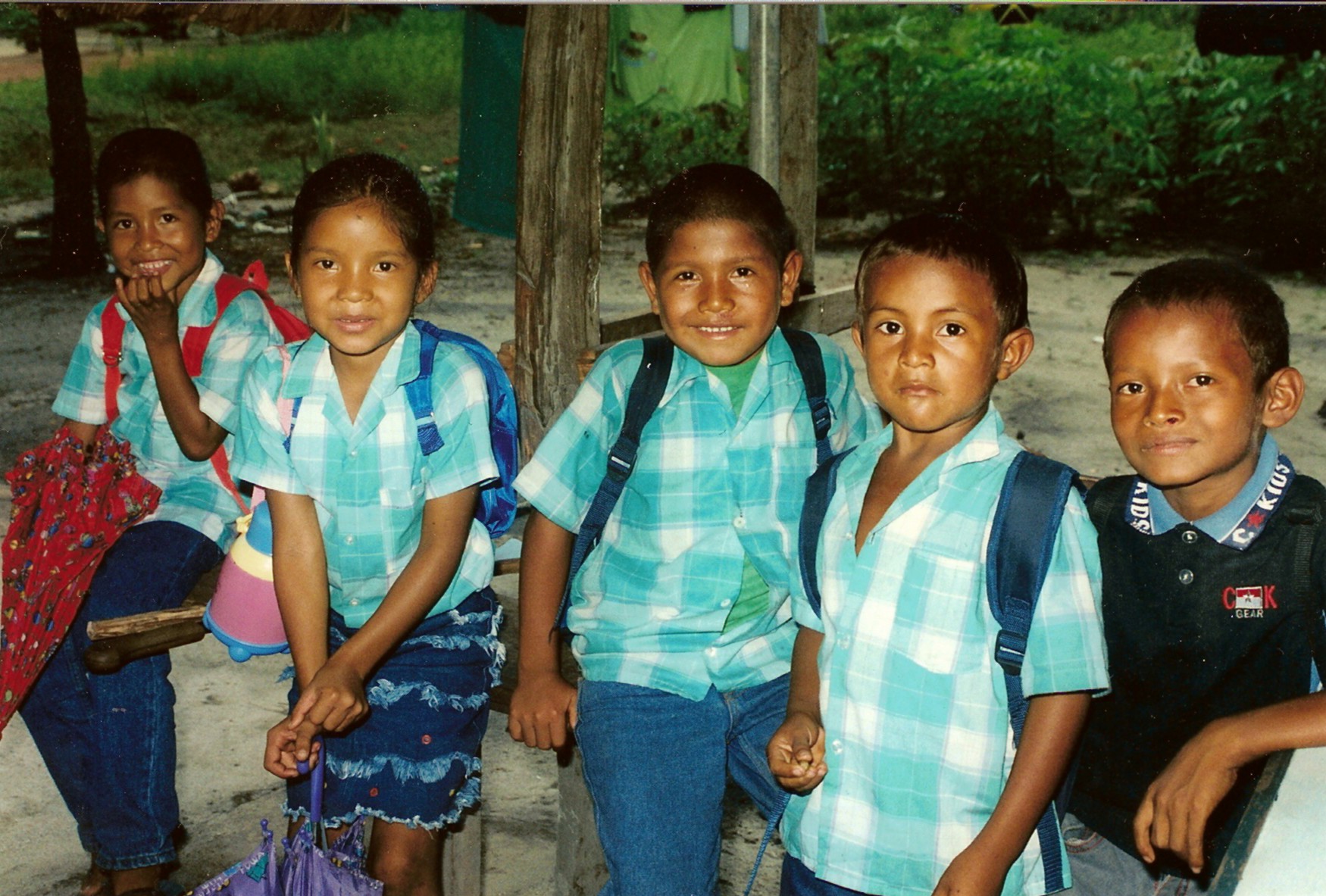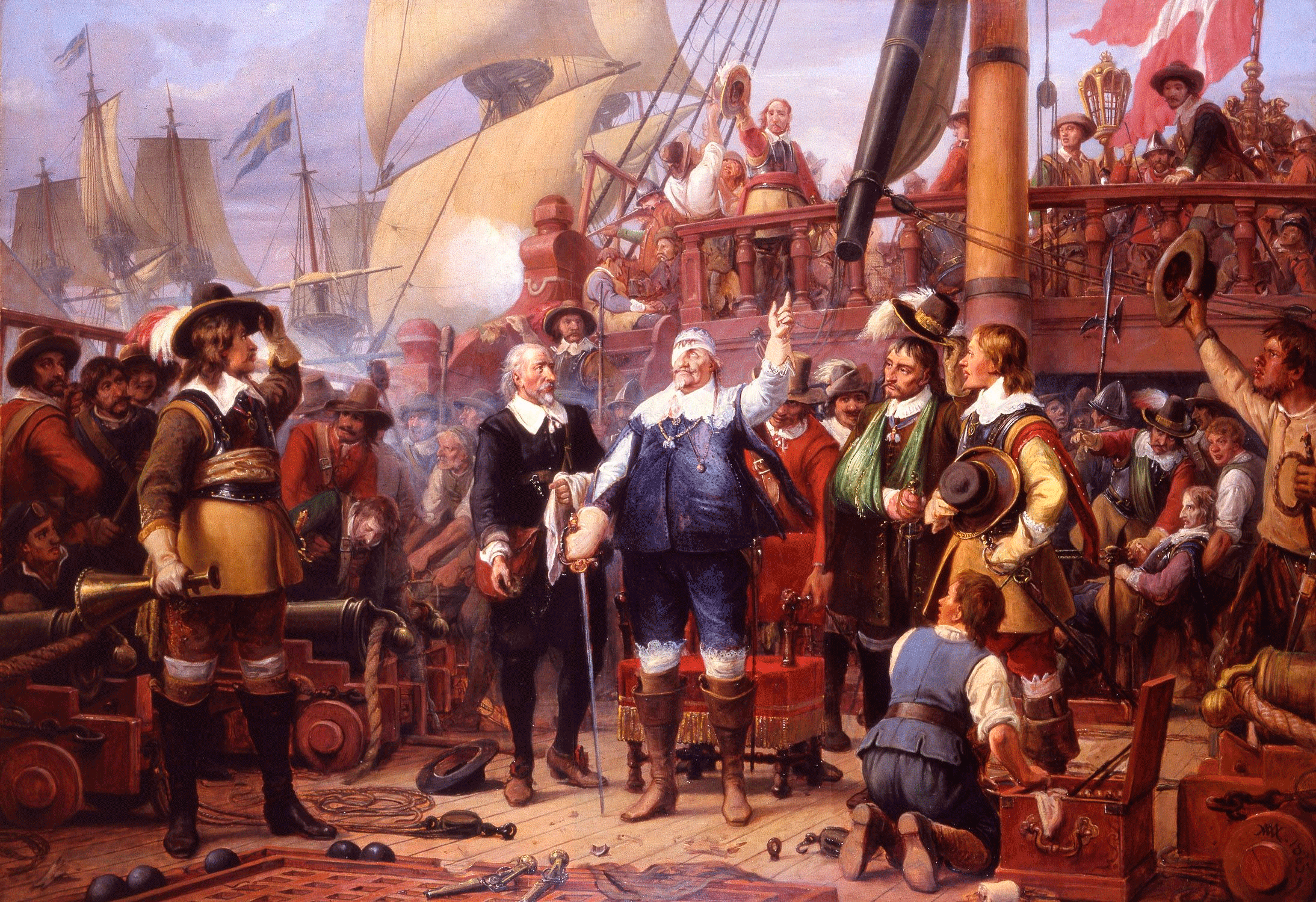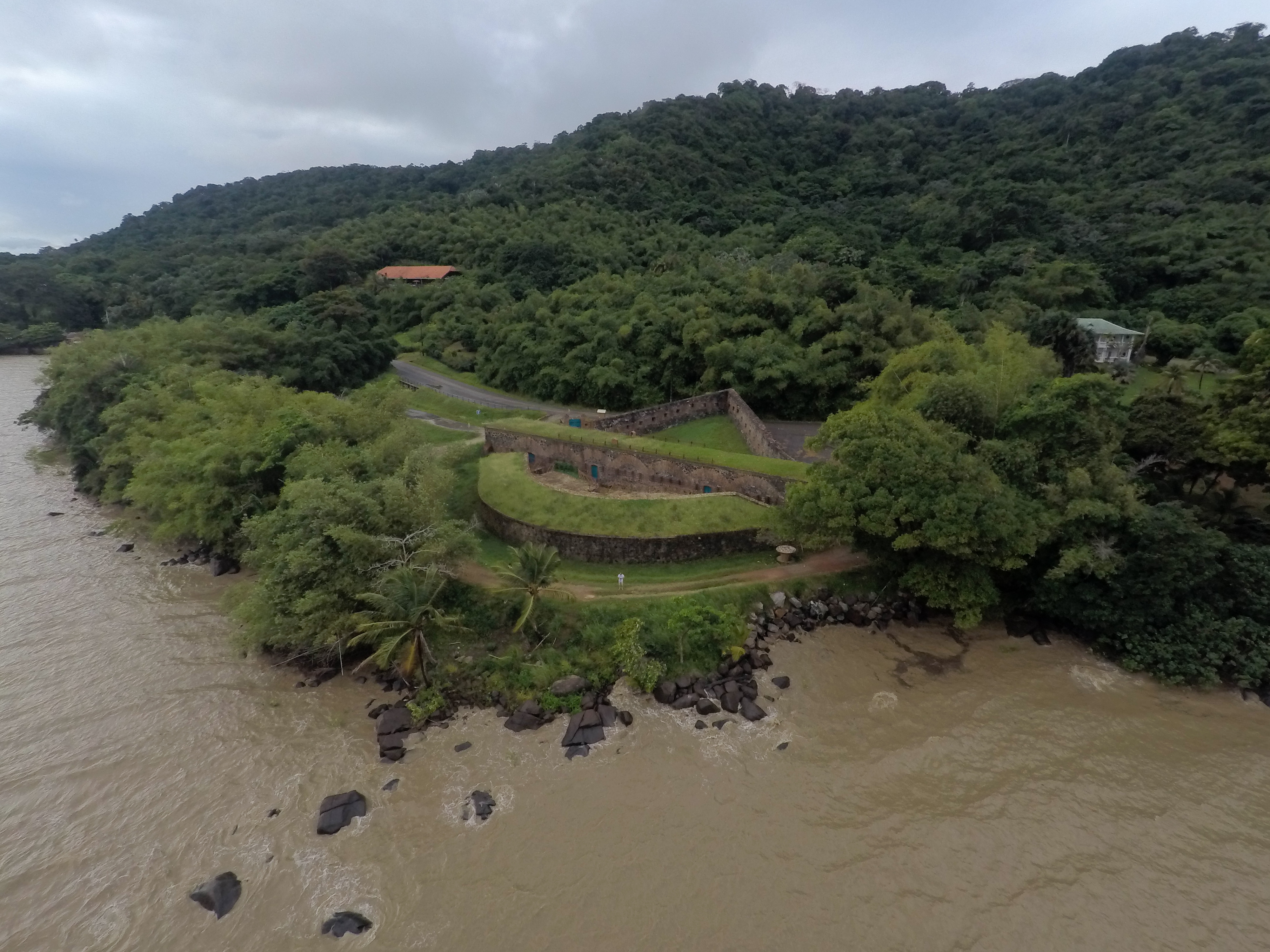|
Charles Poncet De Brétigny
Charles Poncet de Brétigny ( – 1644) was founder and governor of the French colony of Cayenne, in what is now French Guiana, from 1644 to 1645. A brutal and despotic man, after just over a year he was murdered by a Carib, as were most of the other colonists. Accounts of the events and aftermath are somewhat confused, gathered from the few survivors several years later. Life Charles Poncet, seigneur de Brétigny was born around 1610. Poncet de Brétigny was appointed admiral, lieutenant-general of King Louis XIII of France and head of the Compagnie de Rouen( fr). Poncet de Brétigny led a group of colonists to Cayenne for the company, also called the Compagnie du Cap au nord. His objective was to found new settlements at Cap Nord and on the Maroni River. He disembarked on Cayenne Island on 4 March 1644, and collected the remains of the first settlers, men who had adopted the customs and language of the local Galibi people. Brétigny landed with 400 men at the cove of Armire ... [...More Info...] [...Related Items...] OR: [Wikipedia] [Google] [Baidu] |
List Of Colonial And Departmental Heads Of French Guiana
French ancien regime (Dates in italics indicate ''de facto'' continuation of office) French First Republic and Empire Bourbon Restoration and July Monarchy Second Republic and Empire Third Republic French overseas département or region See also * French Guiana ** Politics of French Guiana References External linksWorld Statesmen – French Guiana {{DEFAULTSORT:Colonial And Departmental Heads of French Guiana French Guiana-related lists French Guiana French Guiana ( or ; french: link=no, Guyane ; gcr, label=French Guianese Creole, Lagwiyann ) is an overseas departments and regions of France, overseas department/region and single territorial collectivity of France on the northern Atlantic ... ... [...More Info...] [...Related Items...] OR: [Wikipedia] [Google] [Baidu] |
Galibi People
The Kalina, also known as the Caribs or mainland Caribs and by several other names, are an indigenous people native to the northern coastal areas of South America. Today, the Kalina live largely in villages on the rivers and coasts of Venezuela, Guyana, Suriname, French Guiana, and Brazil. They speak a Cariban language known as Carib. They may be related to the Island Caribs of the Caribbean, though their languages are unrelated. Name The exonym ''Caribe'' was first recorded by Christopher Columbus. One hypothesis for the origin of ''Carib'' is that it means "brave warrior". Its variants, including the English ''Carib'', were then adopted by other European languages. Early Spanish explorers and administrators used the terms ''Arawak'' and ''Caribs'' to distinguish the peoples of the Caribbean, with ''Carib'' reserved for indigenous groups that they considered hostile and ''Arawak'' for groups that they considered friendly. The Kalina call themselves ''Kalina'' or ''Karìna'' , ... [...More Info...] [...Related Items...] OR: [Wikipedia] [Google] [Baidu] |
French Explorers
French (french: français(e), link=no) may refer to: * Something of, from, or related to France ** French language, which originated in France, and its various dialects and accents ** French people, a nation and ethnic group identified with France ** French cuisine, cooking traditions and practices Fortnite French places Arts and media * The French (band), a British rock band * "French" (episode), a live-action episode of ''The Super Mario Bros. Super Show!'' * ''Française'' (film), 2008 * French Stewart (born 1964), American actor Other uses * French (surname), a surname (including a list of people with the name) * French (tunic), a particular type of military jacket or tunic used in the Russian Empire and Soviet Union * French's, an American brand of mustard condiment * French catheter scale, a unit of measurement of diameter * French Defence, a chess opening * French kiss, a type of kiss involving the tongue See also * France (other) * Franch, a surname * French ... [...More Info...] [...Related Items...] OR: [Wikipedia] [Google] [Baidu] |
1644 Deaths
It is one of eight years (CE) to contain each Roman numeral once (1000(M)+500(D)+100(C)+(-10(X)+50(L))+(-1(I)+5(V)) = 1644). Events January–March * January 22 – The Royalist Oxford Parliament is first assembled by King Charles I of England. * January 26 – First English Civil War – Battle of Nantwich: The Parliamentarians defeat the Royalists, allowing them to end the 6-week Siege of Nantwich in Cheshire, England. * January 30 – **Dutch explorer Abel Tasman departs from Batavia in the Dutch East Indies (now Jakarta in Indonesia) on his second major expedition for the Dutch East India Company, to maps the north coast of Australia. Tasman commands three ships, ''Limmen'', ''Zeemeeuw'' and ''Braek'', and returns to Batavia on August 4 with no major finds. ** Battle of Ochmatów: Polish–Lithuanian Commonwealth forces under hetman Stanisław Koniecpolski secure a substantial victory over the horde of Crimean Tatars, under Tugay Bey. * Febr ... [...More Info...] [...Related Items...] OR: [Wikipedia] [Google] [Baidu] |
Barbados
Barbados is an island country in the Lesser Antilles of the West Indies, in the Caribbean region of the Americas, and the most easterly of the Caribbean Islands. It occupies an area of and has a population of about 287,000 (2019 estimate). Its capital and largest city is Bridgetown. Inhabited by Island Caribs, Kalinago people since the 13th century, and prior to that by other Indigenous peoples of the Americas, Amerindians, Spanish navigators took possession of Barbados in the late 15th century, claiming it for the Crown of Castile. It first appeared on a Spanish map in 1511. The Portuguese Empire claimed the island between 1532 and 1536, but abandoned it in 1620 with their only remnants being an introduction of wild boars for a good supply of meat whenever the island was visited. An Kingdom of England, English ship, the ''Olive Blossom'', arrived in Barbados on 14 May 1625; its men took possession of the island in the name of James VI and I, King James I. In 1627, the first ... [...More Info...] [...Related Items...] OR: [Wikipedia] [Google] [Baidu] |
Compagnie De La France équinoxiale
The Compagnie de la France équinoxiale (Equinoctial France Company), or Compagnie de l'establissement des colonies françoises dans les terres fermes de l'Amerique, was a French enterprise formed in 1651 to colonize equatorial South America. The enterprise soon failed. In 1663 it was relaunched, but the next year was merged into a general company for all French possessions in the Americas. The colony of Cayenne, the nucleus of French Guiana, was eventually secured in 1674. Background " Equinoctial France" (France équinoxiale) was the name given to the part of South America between the Orinoco and Amazon River – the Guianas. The French government gave several companies the right of commerce and navigation in these countries. The first was given to the merchants of Rouen in 1633 and confirmed by letters patent in 1638. Settlements were founded at the mouth of the Cayenne River in 1634 and 1636. In 1643, a new company was formed in Rouen called the Compagnie du cap du Nord, which ... [...More Info...] [...Related Items...] OR: [Wikipedia] [Google] [Baidu] |
Fort Cépérou
Fort Cépérou was a fort that protected the city of Cayenne, French Guiana. It is named after Cépérou, a celebrated indigenous chief who ceded the land. The original wooden fort was built on a hill looking over the mouth of the Cayenne River in 1643. Over the years that followed the French temporarily lost the site to the Dutch, English and Portuguese. The fort was torn down and rebuilt several times. Between 1689 and 1693 the whole town of Cayenne, including the fort, was surrounded by a classic line of fortifications by Vauban. The town was occupied by the Portuguese during the Napoleonic wars between 1809 to 1817 and Vauban's fortifications were destroyed, as were the bastions of the fort. Little remains of the fort today. Location The remains of Fort Cépérou are at the western edge of the present city of Cayenne, French Guiana. A map from 1769 shows the fort and town in the north west of the Island of Cayenne, which lies on the Atlantic coast of Guiana between the mout ... [...More Info...] [...Related Items...] OR: [Wikipedia] [Google] [Baidu] |
Cayenne River
Cayenne (; ; gcr, Kayenn) is the capital city of French Guiana, an overseas region and department of France located in South America. The city stands on a former island at the mouth of the Cayenne River on the Atlantic coast. The city's motto is "fert aurum industria", which means "work brings wealth". Cayenne is the largest francophone city of the South American continent. In the 2019 census, there were 147,943 inhabitants in the metropolitan area of Cayenne (as defined by INSEE), 65,493 of whom lived in the city (commune) of Cayenne proper. History Ignored by Spanish explorers who found the region too hot and poor to be claimed, the region was not colonized until 1604, when the French founded a settlement. However, it was soon destroyed by the Portuguese, determined to enforce the Treaty of Tordesillas. French colonists returned in 1643 and founded Cayenne, but were forced to leave once more following the Amerindian attacks. In 1664, France finally established a p ... [...More Info...] [...Related Items...] OR: [Wikipedia] [Google] [Baidu] |
Remire-Montjoly
Remire-Montjoly (often unofficially spelled Rémire-Montjoly) is a commune of French Guiana, an overseas region and department of France located on the northeast coast of South America. Remire-Montjoly is a suburb of Cayenne, the capital ''préfecture'' and largest city of French Guiana. It is located to the south-east of Cayenne. Residential districts are located along some of the best beaches in the Cayenne area. Cayenne and French Guiana's main seaport, the port of Dégrad des Cannes, is located in the commune of Remire-Montjoly, on the estuary of the river Mahury. Almost all of French Guiana's imports and exports pass through the port of Dégrad des Cannes. History The name of the town Remire, formerly Armire, is of Galibi origin. The town was founded in October 1652 by missionaires. In 1656, Dutch Jews who had fled from Pernambuco, Brazil settled in Remire and built a sugar factory. Most of them left for Suriname when the French retook the area. In 1666, the Jesuits settle ... [...More Info...] [...Related Items...] OR: [Wikipedia] [Google] [Baidu] |
Maroni (river)
The Maroni or Marowijne (french: link=no, Maroni, nl, Marowijne, Sranan Tongo: ''Marwina-Liba'') is a river in South America that forms the border between French Guiana and Suriname. Course The Maroni runs through the Guianan moist forests ecoregion. It originates in the Tumuk Humak Mountains and forms the (disputed) border between France (region of French Guiana) and Suriname. In its upper reaches, it is also known as the Lawa, and close to its source it is known as the Litani. The total length of Litani, Lawa and Maroni is . There are two nature preserves located in the estuary region on the Surinamese side of the river, near the village of Galibi. They provide protection for the birds and the leatherback sea turtles that hatch there. Territorial dispute In 1860, the question was posed from the French side, which of the two tributary rivers was the headwater, and thus the border. A joint French-Dutch commission was appointed to review the issue. The Dutch side of th ... [...More Info...] [...Related Items...] OR: [Wikipedia] [Google] [Baidu] |
Huet De Navarre
Huet de Navarre was a French soldier who was briefly governor of the colony of Cayenne in what is now French Guiana in 1652. An 1888 biography has been shown to be largely fictitious, and little is known of his life. Life A life of Huet de Navarre is given in ''Appletons' Cyclopædia of American Biography'', Volume 3 (1888). It relates how Huet de Navarre was born in Conde sur Noireau in 1611, was lieutenant to a French expedition under Poncet de Bretigny that established a colony on the banks of the Cayenne River in 1643, was elected governor of the colony in 1644 after Bretigny had been murdered, was reelected head of the colony after a new French expedition arrived in 1652, and died in Suriname in 1656 after the French had been driven from Cayenne. Unfortunately, it has been shown that although there was a M. de Navarre in Cayenne in 1652, most of the Appleton's biography must be considered fictitious. It is known that in 1643 Charles Poncet de Brétigny of the Compagnie de Ro ... [...More Info...] [...Related Items...] OR: [Wikipedia] [Google] [Baidu] |
Treaty Of Utrecht
The Peace of Utrecht was a series of peace treaties signed by the belligerents in the War of the Spanish Succession, in the Dutch city of Utrecht between April 1713 and February 1715. The war involved three contenders for the vacant throne of Spain, and involved much of Europe for over a decade. The main action saw France as the defender of Spain against a multinational coalition. The war was very expensive and bloody and finally stalemated. Essentially, the treaties allowed Philip V (grandson of King Louis XIV of France) to keep the Spanish throne in return for permanently renouncing his claim to the French throne, along with other necessary guarantees that would ensure that France and Spain should not merge, thus preserving the balance of power in Europe. The treaties between several European states, including Spain, Great Britain, France, Portugal, Savoy and the Dutch Republic, helped end the war. The treaties were concluded between the representatives of Louis XIV of Fr ... [...More Info...] [...Related Items...] OR: [Wikipedia] [Google] [Baidu] |




.jpg)